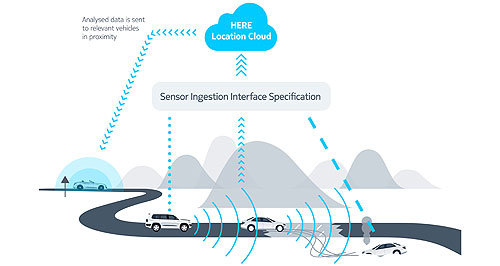News - General News - TechnologyAutonomous maps Here and nowConnected: Intel is making a multi-pronged attempt to position itself at the head of the autonomous vehicle technology push. Map company Here says Australian autonomous vehicle trials will foster innovation25 May 2017 A DIRECTOR of a leading global road mapping company that has completed 3D laser-scanned maps of the entire Australian road network to an accuracy of 2.5 centimetres has applauded the release of national autonomous vehicle test guidelines, saying such trials can lead to a wave of innovation in Australia. Melbourne-based Brent Stafford, the Asia-Pacific director for Here, told GoAuto that Australia’s state and federal governments were “providing the right signals, stimulation and even money and regulatory framework” towards the development of autonomous driving technology and related fields in Australia. He said Australian companies such as South Australia’s Cohda Wireless and institutions such as Monash University were making major contributions to automated systems that would end up having far greater applications than simply guiding vehicles up a road. “We are very good at this,” he said. “We have a lot of talent in this area – in machine vision, in machine learning, in deep learning where you take all of the data and let the computer at the data to understand where the patterns occur where you may not even be aware of those patterns. “We have advances beyond supercomputing – in quantum computing – plus we have a passion. We love this stuff in Australia. “All the right ingredients are there. As soon as the transport ministers in the states permit individual trials, there will be individual trials. Then we will see the whole ecosystem get moving. It is hugely exciting.” Mr Stafford’s comments follow the release in Canberra on Wednesday of national guidelines for on-road trials of autonomous vehicles by motor companies and technology suppliers. The rules, which are expected to be rubber stamped by state and territory governments, have been drawn up by the National Transport Commission and Austroads with the objective of providing clear, nationally consistent rules for tests on public roads. “The key now is to continue the positive drive,” Mr Stafford said. “Let us try to define ourselves. Let’s try to find the role Australia can play in this new wave – how can we position ourselves now.” Owned by a consortium of major corporations including Volkswagen, BMW, Mercedes-Benz and Intel, Here already supplies numerous car companies with satellite navigation map data and related technologies, but has been advancing its technology to lay the groundwork for autonomous vehicles with ever more accurate maps, including high-definition video imaging and – more recently – vehicle-to-the-cloud data systems to provide real-time warnings to drivers. So far, 12 motor manufacturers and nine other partners had signed up with Here which is also in discussions with 92 other organisations, including road authorities, around the world. According to Mr Stafford, Here tried to work 10 years ahead of the curve, but the rapid advance of autonomous driving technologies has narrowed the gap. He said accurate road mapping – essential for autonomous vehicles – had to be prepared before trials could began, and it was, 12 months ago. However, Mr Stafford said the mapping work never stopped, not only adding new roads but also improving accuracy and even mapping off-road areas such as car parks that would need to be accessed by autonomous vehicles. He said Here was perfecting car-to-the-cloud data collection that fed a raft of anonymous information signals that could be fed back to road users, perhaps warning them of a slippery road surface (triggered by ABS activation in cars in the area) or traffic problems. This system, using a Here-developed open-data protocol called Sensoris, was already telling Here of newly created roads before they were completed. Mr Stafford said that despite in-car sensors such as video cameras, laser and radar systems, maps were essential to the safe and comfortable operation of autonomous vehicles, providing early warning of unseen obstacles and danger points such as a school crossing over the crest of a hill or a roundabout around a bend, out of sensor range. He said Here’s laser mapping not only included road signs and roadside constructions but even a measure of road roughness. Mr Stafford said a wide variety of companies – such as insurance companies – were discovering uses for Here’s data, outside of the intended purpose for road vehicles. He said Here’s Australian office in the Melbourne suburb of Richmond was planning a laboratory to explore such applications and explain them to potential users.  Read more24th of May 2017  Autonomous vehicles a step closer in AustraliaAustralia welcomes autonomous vehicle developers with new guidelines30th of June 2016  Driverless cars lead to MelbourneLatest global autonomous vehicle technologies set to break cover in Australia |
Click to shareGeneral News articlesResearch General News Motor industry news |
















Facebook Twitter Instagram